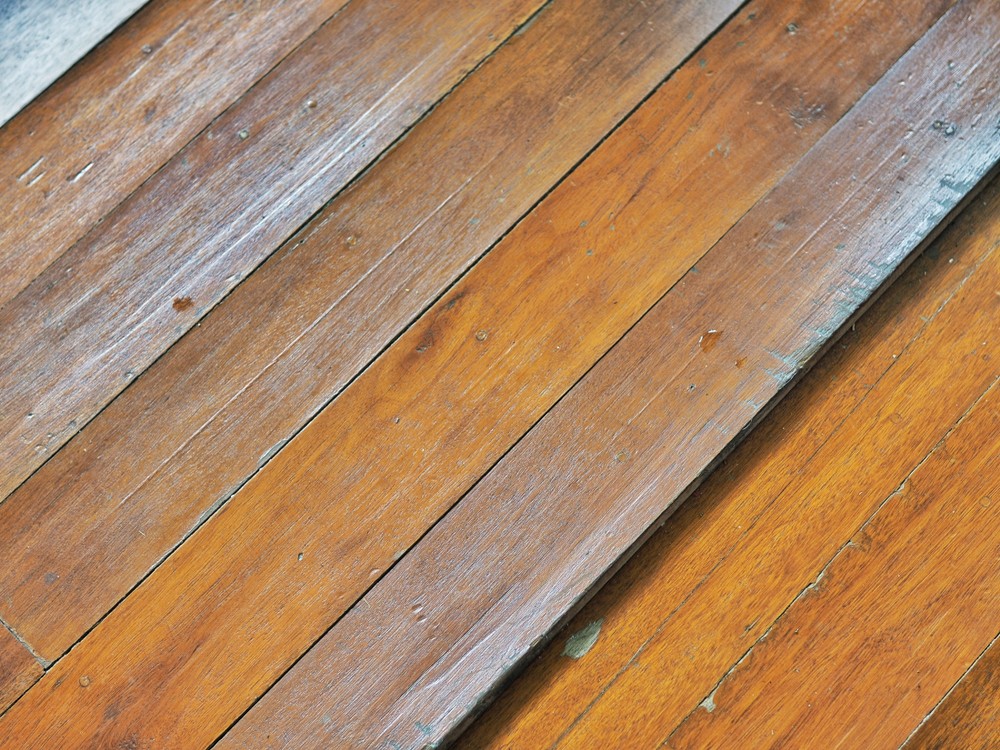How to Deal with Cupped Hardwood Floors
Wooden floors make a beautiful addition to any home. That doesn’t mean, however, that hardwood flooring is completely resistant to all forms of damage or signs of wear and tear.
For instance, if you notice that your wooden floors seem to be slightly raised at the edges, it might be experiencing what is known as “hardwood floor cupping.” Depending on the severity of the cupping, there are certain ways to treat this condition on your flooring.
So, here’s what you need to know about cupped hardwood floors and how to deal with it.

What Is Hardwood Floor Cupping?
First things first, you need to understand what cupping is and how to spot it on your floors. Cupped hardwood floors are when a wooden plank appears to be higher on the edges compared to the center of the board. Just like its name, cupped hardwood floors seem to form the shape of a cup.
Cupping is generally the result of moisture in the room. All types of wood react to moisture. While some types of wood have a higher resistance level, factors like the wood’s ability to absorb moisture or just how much moisture there is in a room can have an effect on your flooring.
How Moisture Affects Your Wooden Floors
When moisture in the air increases, wood tends to swell because it is absorbing the moisture. And when it swells, there isn’t enough space for it to grow if it remains flat with the other planks, so it will begin to expand upwards on the edges where moisture will start to build.
Luckily, cupped hardwood flooring can be treated without having to completely replace your planks. As long as you act as soon as you start to see signs of cupping, it may be possible to reverse the cupping effect and bring your flooring back to its original condition.
Inspect Your Room for Leaks
If you notice cupping hardwood floors in your kitchen, it’s likely that the culprit source of moisture is coming from unaddressed leaks that are making its way to your floors. Check your sinks, dishwasher, refrigerator, and any other appliance in the room connected to your plumbing or is likely to produce leaks.
Once you’ve found a leak and have it sealed, let your floors dry out by letting it air out and avoid getting wet. If it is minor cupping, it should reverse the cupping after you’ve removed the source of your leaks.
Install Dehumidifiers at Home
If there are no leaks or damages that are the source of moisture, it is possible that your home’s indoor air or your area’s climate may just naturally be so humid. Depending on where you live, it’s typical for wood to expand in the summer due to the humid air and then shrink in the winter because of dry air. Too much exposure to this can result in cupping.
Should this be the case, it may be a good investment to buy dehumidifiers for one room or a centralized dehumidifier for your home. If you have more than one room with hardwood flooring installed, it may be a good idea to go for the latter, since it would be a more practical solution to deal with all the hardwood floorings at home.
Use your dehumidifiers during the hotter months or during seasons when humidity levels are high.
Clean Your Flooring Properly
The process of cleaning hardwood floors isn’t the same as you would with other flooring types like tile or linoleum. For example, it is OK to mop hardwood floors, but if you don’t practice habits like wringing out your mop or using the appropriate hardwood floor cleaner, you’re simply exposing your floors to additional moisture that could cause cupping.
And when cleaning up leaks and spills, make sure there is ample air circulation in the room to dry out your floors. Any remaining moisture on hardwood flooring may be absorbed and cause cupping.
Replace Your Planks
In case you’ve exhausted all your options and cupping still appears to be an issue, you might have to consider having your planks replaced. The best-case scenario is that only a handful of planks will need to be replaced. But in case the damage has extended to most of the room, the entire room may have to be re-installed with hardwood flooring.
Hardwood floors can be a beautiful and functional installation to any room in your home, but it isn’t indestructible. Cupping happens when your floors are exposed to excessive moisture. So, to prevent major damage that can result in having to replace your planks, it is best to handle your cupped hardwood floors as soon as you see signs of minor damage.
Ua Floors provides quality hardwood flooring that are not only aesthetically pleasing for any type of interior design, but also functional. Our sustainably-sourced hardwood flooring is meant to last much longer than the average wooden flooring products in the market.
Contact us today to get a quotation and see how quality hardwood flooring can make all the difference in your home.
